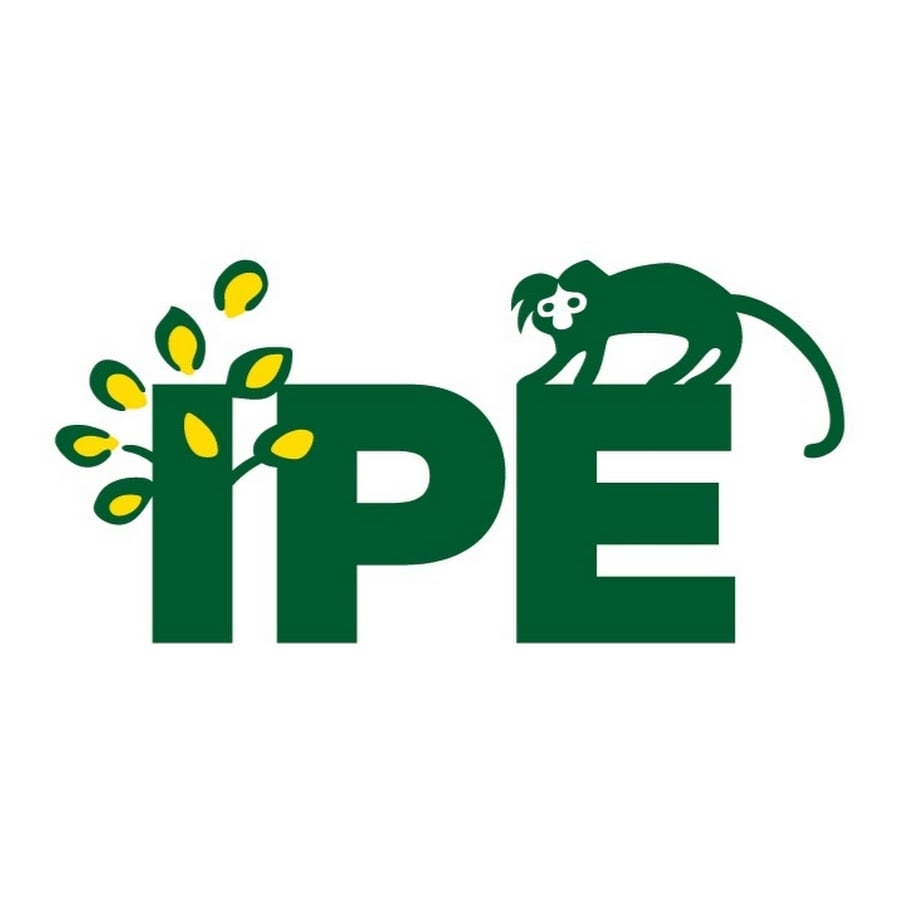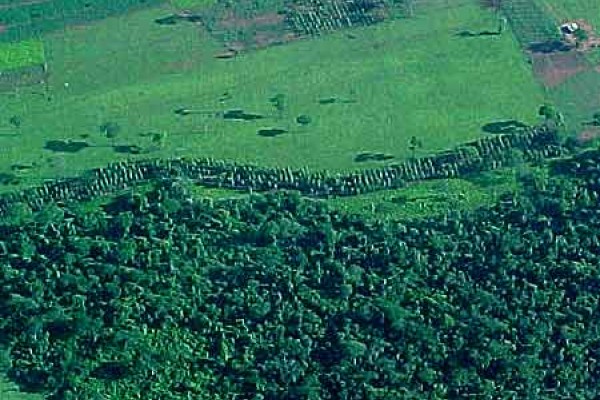 ::cck::158::/cck::
::cck::158::/cck::
::introtext::
Forest fragments in the Pontal do Paranapanema are exposed to anthropic actions that lead to degradation (fires, logging, agro-toxins) and edge effects (wind, fluctuating temperatures, excessive sunlight, decreased humidity, and exotic plant species). These factors influence ecological processes in Atlantic Forest fragments.
::/introtext::
::fulltext::
Although little attention has been given to the role of agro-forestry systems as buffers and protection for remaining fragments, agro-forestry strips can serve as barriers to outside pressures.
Since 1997, IPÊ has implemented the Green Hug Project around Morro do Diabo State Park and other forest fragments in the Pontal do Paranapanema.Its objective is to protect and isolate the exposed and degraded borders of these forests. The Green Hug consists of an agro-forestry strip that surrounds forests. This “hug” not only guarantees the protection of remaining forests, but also creates a multiple benefit zone for surrounding human communities (with trees that can be used for firewood, wood, fruits, grain and animal feed).
Multiple benefit zones are designed in an adaptive and participatory way. They are generally linear agro-forestry areas (40-80m in width, 1-2 km in length) implemented on small rural properties at the interface between forest and open landscape. These zones create an environment adjacent to forest fragments, very similar to the forests themselves, that relieves the pressures from local landowners.
Reforestation with agro-forestry techniques guarantees that communities collaborate with reforestation and promote habitat and species conservation. Residents, encouraged to undertake the controlled and sustainable exploitation of natural products from the Green Hugs, learn to live harmoniously with nature near forest fragments, causing minimal impacts and helping preserve the local biodiversity.
::/fulltext::
::ac_acordeon::2::/ac_acordeon::
::cck_ac_acordeon::acordeon::/cck_ac_acordeon::
::ac_titulo_acordeon|0|ac_acordeon::Objectives::/ac_titulo_acordeon|0|ac_acordeon::
::ac_texto_acordeon|0|ac_acordeon::
- Establish agro-forestry systems that surround native forests and protect fragments using agro-sylvatic methods (multi-use trees and shrubs interplanted with agricultural crops) in the rural properties of the Pontal do Paranapanema;
- Control and diminish edge effects in Morro do Diabo State Park and other remnants of Interior Atlantic Forest;
- Produce good (fruits, wood, firewood, medicinal plants) and services (windbreaks, living fences, conservation and soil fertility, diversified production, shade, leisure) that can improve quality-of-life for low-income residents;
- Generate and transfer data between forest fragments and their respective neighboring human communities (small- and medium-size farmers).
::/ac_texto_acordeon|0|ac_acordeon::
::cckend_ac_acordeon::::/cckend_ac_acordeon::
::cck_ac_acordeon::acordeon::/cck_ac_acordeon::
::ac_titulo_acordeon|1|ac_acordeon::Team::/ac_titulo_acordeon|1|ac_acordeon::
::ac_texto_acordeon|1|ac_acordeon::
Laury Cullen Jr General Coordinator Contact: [email protected]
Tiago Pavan Beltrame Contact: [email protected]
::/ac_texto_acordeon|1|ac_acordeon::
::cckend_ac_acordeon::::/cckend_ac_acordeon::
::ac_arquivos::1::/ac_arquivos::
::cck_ac_arquivos::arquivo::/cck_ac_arquivos::
::ac_titulo_arquivo|0|ac_arquivos::::/ac_titulo_arquivo|0|ac_arquivos::
::ac_arquivo|0|ac_arquivos::::/ac_arquivo|0|ac_arquivos::
::cckend_ac_arquivos::::/cckend_ac_arquivos::
::ac_galeria::5::/ac_galeria::
::cck_ac_galeria::galeria::/cck_ac_galeria::
::ac_foto_descricao|0|ac_galeria::::/ac_foto_descricao|0|ac_galeria::
::ac_foto|0|ac_galeria::images/artigo_completo/galeria/1275/126-3120e7e1ce.jpg::/ac_foto|0|ac_galeria::
::cckend_ac_galeria::::/cckend_ac_galeria::
::cck_ac_galeria::galeria::/cck_ac_galeria::
::ac_foto_descricao|1|ac_galeria::::/ac_foto_descricao|1|ac_galeria::
::ac_foto|1|ac_galeria::images/artigo_completo/galeria/1275/226-7ae3848bc4.jpg::/ac_foto|1|ac_galeria::
::cckend_ac_galeria::::/cckend_ac_galeria::
::cck_ac_galeria::galeria::/cck_ac_galeria::
::ac_foto_descricao|2|ac_galeria::::/ac_foto_descricao|2|ac_galeria::
::ac_foto|2|ac_galeria::images/artigo_completo/galeria/1275/323-99901edb36.jpg::/ac_foto|2|ac_galeria::
::cckend_ac_galeria::::/cckend_ac_galeria::
::cck_ac_galeria::galeria::/cck_ac_galeria::
::ac_foto_descricao|3|ac_galeria::::/ac_foto_descricao|3|ac_galeria::
::ac_foto|3|ac_galeria::images/artigo_completo/galeria/1275/418-caeda7bc58.jpg::/ac_foto|3|ac_galeria::
::cckend_ac_galeria::::/cckend_ac_galeria::
::cck_ac_galeria::galeria::/cck_ac_galeria::
::ac_foto_descricao|4|ac_galeria::::/ac_foto_descricao|4|ac_galeria::
::ac_foto|4|ac_galeria::images/artigo_completo/galeria/1275/512-e95bb4b30d.jpg::/ac_foto|4|ac_galeria::
::cckend_ac_galeria::::/cckend_ac_galeria::


